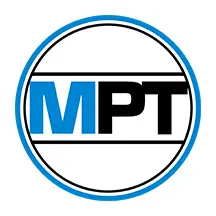 As 2024 approaches, it’s time to start thinking about New Year’s resolutions. Think back to what you said your 2023 resolution was… did you actually reach your goal? If not, that’s okay. Actually, that makes you part of the majority! Only 6% of goal-setters are still following their resolution from last year (1). In fact, over 50% of people were no longer working towards their goal by April 1st!
As 2024 approaches, it’s time to start thinking about New Year’s resolutions. Think back to what you said your 2023 resolution was… did you actually reach your goal? If not, that’s okay. Actually, that makes you part of the majority! Only 6% of goal-setters are still following their resolution from last year (1). In fact, over 50% of people were no longer working towards their goal by April 1st!
So… what’s going wrong?
Well, when most people think about their goals, they think in concepts, such as “I want to eat better” or “I want to lose weight”. But how do you know when you’ve hit your goal? With no finish line in sight, it can be easy to give up early on. That’s why setting a SMART goal is an important step in following through with your New Year’s Resolution.
What is a SMART Goal?
SMART is a goal setting acronym that helps you create a clear definition of what your goal is, how you’ll track your progress, and where your finish line is. By creating a SMART goal, you are using an evidence-based technique to increase your goal adherence (2). Let’s take a look at each component of a SMART goal:
- Specific: As mentioned before, just saying “I want to be healthier in 2024” doesn’t give you a clear picture of what you are actually going to be doing. How are you going to be healthier? Think about exactly what being healthier means to you, and what actions you are going to take to be healthier. A more specific goal could be “I will walk for at least 30 minutes four days a week”.
- Measurable: To know if you’ve achieved your goal, you have to have a way to track your progress. “I want to be healthier in 2024” isn’t measurable, because there is no specific metric for what “healthier” is. Instead, it should be something you can quantify, such as “I will take 30-minute walk four days a week”.
- Attainable: While you may be eager to make big goals for what you would like to do in the new year, it is important to be realistic. If you have never been a runner, deciding to run a marathon is going to be a daunting task, and you may shy away rather quickly. Instead of going straight to a marathon, start by running regularly to train for a 5k! Having smaller goals that are easily attainable can increase commitment to your goal and keep you from feeling discouraged.
- Relevant: Make sure that what you are doing to accomplish your goal will truly help you reach your goal. While lifting weights is a great form of exercise, it isn’t going to help you train for a 5k.
- Time-Bound: Having a deadline to reach your goal can help you to stay on track. Set a detailed timeline for your long term and short-term goals. For example, if you are looking to lose 30 pounds in the new year, you may want to work on losing five pounds each month for the next six months, or three pounds for the next ten months”.
Three Examples of SMART Goals
- “Over the next six months, I want to train for a half-marathon. I will run five days a week and keep a log of how far I run and work with my personal trainer to increase how far I run by 5% each week.”
- “To lose 60 pounds by the end of the year, I will go to the gym four days a week and cook meals at home at least six days a week to lose five pounds a month.
- “My goal is to $300 in the next three months. I will make my coffee at home each day and bring lunch to work to save money and deposit the money I save into a savings account. In order to save $300 in three months, I will put at least $25 into my savings each week.”
Final Goal Setting Tips
- Stay Positive, and not just in your mindset! Instead of saying “I will eat out less”, say “I will cook at home more”. Having an action-oriented goal can increase success by 11.8% compared to avoidance-based goals1.
- Talk to experts! Sometimes it is hard to know if you are setting a realistic and attainable goal. If you don’t know, talk to someone who does! If you are setting a financial goal, speak with a financial advisor or contact your bank about what would be best for you. If you have a nutrition-based goal, work with a nutritionist or registered dietitian. If you are focusing on physical fitness, a personal trainer or physical therapist will be able to answer your questions!
References:
1 “New Year’s Resolutions Statistics 2024.” 2023. Forbes Health. December 4, 2023. https://www.forbes.com/health/mind/new-years-resolutions-statistics/#:~:text=For%202024%2C%20the%20 Forbes%20Health%2FOnePoll%20survey%20found%20some.
2 Hooker, Stephanie A., Anjoli Punjabi, Kacey Justesen, Lucas Boyle, and Michelle D. Sherman. 2018. “Encouraging Health Behavior Change: Eight Evidence-Based Strategies.” Family Practice Management 25 (2): 31–36. https://www.aafp.org/pubs/fpm/issues/2018/0300/p31.html.

